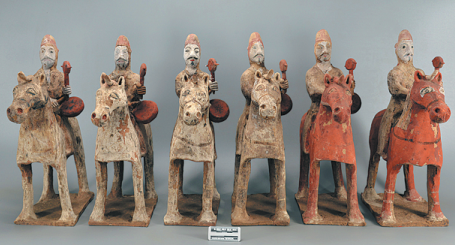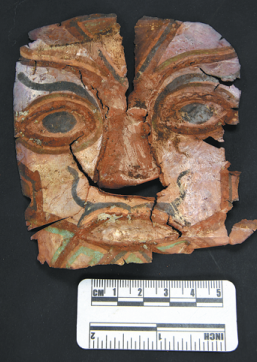Top new archaeology findings unveiled

This year marks the centennial of the birth of modern Chinese archaeology following the discovery of Yangshao Culture-which dates to 7,000 years ago-and Chinese archaeologists have presented fruitful new findings for the celebration.
China's Top 10 New Archaeological Discoveries of 2020, this year's version of an annual list often referred to as "the Oscars of Chinese Archaeology", was released on Tuesday. The list reflects how civilization formed and grew, mixing various cultural elements through millenniums.
The 10 outstanding findings are highlights of over 1,300 archaeological excavations in China last year, according to Yan Yalin, director of the cultural heritage conservation and archaeology department of the National Cultural Heritage Administration.
Twenty candidates, selected by archaeologists' polls and public opinion, entered the final round of appraisals, which was conducted by a panel of 21 judges on Monday and Tuesday. The panel was composed of top-tier scholars from the country's universities, research institutes and museums.
Beside the East China Sea, archaeologists unearthed a massive shell mound dating from 8,300 years ago-the biggest and oldest of its kind on the Chinese mainland-at the Jingtoushan site in Yuyao, Zhejiang province. The site was so well preserved in mud 8 meters below the surface that the myriad shells unearthed looked almost like they hadn't aged at all, giving the archaeological dig the appearance of a seafood market.
"An abundance of other relics, like articles of daily use left in the marshland, also vividly reflected people's lifestyle in coastal areas back then," said Li Shuicheng, a Sichuan University professor and member of the judges panel. "That also provides crucial references for studies of environmental changes on the coast."
Meanwhile, an epic of the early history of Tibet was discovered in the form of figurines and artifacts at the Sangsdar Lungmgo grave site in Zanda county, Ngari prefecture, Tibet autonomous region. The articles spanned from the 4th century BC to the 7th century AD.
"Through the unearthed wooden figurines and gold and silver artifacts, we see frequent communication among the region, with the area to the south of the Himalayas as well as today's Central China and the Xinjiang Uygur autonomous region," said Han Guohe, an archaeologist and deputy president of Zhengzhou University.
Thanks to the discoveries, researchers can sweep away some of the fog obscuring the past.
In Guizhou province, Zhaoguodong cave, the oldest site among the Top 10 and dating from 12,000 to 45,000 years ago, offered key clues for studies of the early history of modern humans through discoveries of tools made of bones.
At the Mopancun site in Tumen, Jilin province, city ruins from the early 13th century-the newest site of the Top 10-was proved to be the capital of Dongxia, a regional state that once had great influence in Northeast China. There was less information about Dongxia than other states due to a lack of documentation. But unearthed artifacts written in Chinese characters showed a close connection between the state and Central China.
In Henan province, in the heart of Central China's plains, considered a cultural hub of ancient China, recent findings are providing a new understanding of the early years of its role nurturing the nation's civilization.
The Shuanghuaishu site in Gongyi was found to contain the ruins of a huge city dating back 5,300 years, and showed many links with urban construction in later historical periods.
"Compared with other key ruins from roughly 5,000 years ago in the rest of China, Henan, which was supposed to be a cultural core, surprisingly remained relevantly 'quiet' within this period," Li said. "But discovery of Shuanghuaishu has expanded our knowledge."
The city's ruins, across 1.17 square kilometers, has three layers of moats around a complex of residential compounds, sacrificial pits, altars, graveyards and other features. It is the highest-level city ruins of its time found along the middle and lower reaches of the Yellow River. One unearthed artifact-an exquisite jade sculpture of a silkworm-also inspired people to look deeper into its significance in the country's history of producing silk.
Another finding that excited archaeologists was a suspected wheel rut on the site. The earliest known confirmed rut in China is from 4,200 years ago, so the new finding, if confirmed, could rewrite the history of transportation, Li added.
In Zhoukou, also in Henan, barns that included fortifications at the Shizhuang site, dating from 2000 to 1700 BC, have provided the earliest evidence in China of government regulation of food storage and supply.
"It is a key clue for our exploration of the governance and social structure of early-stage states, and also aids our research on how a centralized dynasty was born and grew in China," said Xu Hong, a researcher at the Chinese Academy of Social Sciences' Institute of Archaeology.
The Top 10 lists, started by China Cultural Relics News, were first released in 1990. Interest in the list has moved beyond niche scholars, and it now attracts much public attention. Last year, the final round of appraisals was livestreamed for public consumption after the offline meeting was canceled due to COVID-19. While the in-person meeting resumed this year, the online presentation was retained to better promote archaeology among the public.
wangkaihao@chinadaily.com.cn
























